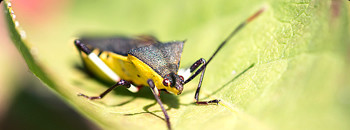It’s the last unofficial weekend of summer, and many are celebrating on the water. Before you leave the marina, watch out for invasive aquatic species—plants and animals that spread to areas of the water you may frequent and enjoy. These aquatic hitchhikers commonly catch a ride on boats while people are cruising the water or fishing, and the most common species include zebra mussels, hydrilla and Asian carp.
Here are some easy ways to help prevent the spread of aquatic invasive species Labor Day weekend:
Clean
According to Stop Aquatic Hitchhikers!, boaters can make the biggest impact by cleaning, draining and drying their boat and equipment once docked for the day. Start by removing visible mud, debris, plants or animals from your boat and dispose of the items away from the water so you don’t contaminate the boat slip or ramp. If possible, wash the boat with high-pressure, hot water. If you plan to fish, inspect all gear including fishing rods, lines, nets and tackle boxes for the same type of lingering debris. And, don’t forget to check recreational items such as inflatable tubes, scuba gear, life vests and paddles!
Drain
After cleaning your boat and equipment, completely drain it by pulling the plug on water holdings such as the motor, bilge and livewell. Keep the drains unplugged while you’re towing it from the lake to storage. Completely draining excess water goes for your floats, too, to prevent the spread of invasive species, removing standing water helps eliminate mosquito breeding grounds.
Dry
Invasive organisms can survive in the smallest amount of water, so drying your boat and all equipment is crucial. Before you head out for your next boating or swimming adventure, make sure your boat and gear are completely dry from your last trip. While drying times depend on the weather and boat type, the recommended time frame is 5-7 days.
Inform
If you frequently partake in water-focused activities, learn how to identify native versus foreign aquatic plants and animals. You can volunteer at a local watershed, park or lake to learn safe removal techniques of these invasive species.
Report
If you find an aquatic invasive species, report it to the U.S. Fish & Wildlife Service. The department’s Nonindigenous Aquatic Species (NAS) Database, managed by the U.S. Geological Survey, allows users to report sightings, sign up for alerts and search for invasive species. In addition, each region is assigned an Aquatic Invasive Species Coordinator to inform the public. Find your contact here.
With these tips in mind, enjoy your Labor Day weekend knowing you’re doing your part keeping invasive species at bay.

